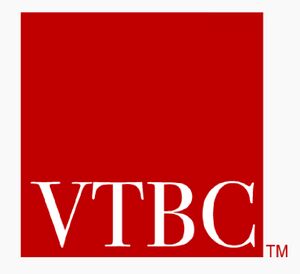Vallos-Tierrador Banking Corporation
 | |
| Company type | Saukhinápolqač |
|---|---|
| TSX: VT PSX: VTB | |
| Industry | Banking financial services |
| Founded | 25 June 1658 |
| Headquarters | |
Area served | Worldwide |
Key people | Alvaró Togaš (Chairman & Chief Executive) Raimond de Viersir (President & Executive of Operations) Estelle Fitzgeraud Anteč Niemiq |
| Products | Investment banking wealth management private banking investment management asset management corporate banking retail banking private equity finance and insurance mortgages credit cards |
| Brands | TierroPay MyShares VTBC NXT |
| Revenue | |
| AUM | |
| Total assets | |
| Total equity | |
| Owner | Qabóri Trading Company (45%) |
Number of employees | 132,783 |
| Divisions |
|
| Subsidiaries | VTBC Global Cathay Investments Vallos Wealth Management CBC |
| Capital ratio | |
The Vallos-Tierrador Banking Corporation (VTBC) is a multinational investment bank and financial services company founded and based in Tierrador and Equitorial Ostiecia. Co-headquartered in the cities of Taisgol and Fort Monteneri, it maintains a presence in all major financial centers as the largest Tierradorian banking institution and one of the largest private bank in the world. VTBC’s client services are well-known for the strict adherence to Tierradorian banking laws, allowing for major bank–client confidentiality and culture of banking secrecy. Due to the bank's large positions in Cronan, Levantine, Sarpedonian, and Alshari markets, VTBC is considered a global systemically important bank.
The history of VTBC dates back to the days of the Qabóri Woqalate, recently recovering from centuries of complete isolation, the Woqalate was willing to get involved with the growing international trade scene across the St. Brendan’s Strait and the Polynesian Sea. Eventually, the creation of the Qabóri Trade Company in 1603 began the Qabóri presence into the world of global trade. For the next 12 years, the QTC would regulate all forms of international trade to and from Qabór until 1658, when two businessmen from Equitorial Ostiecia met with Qabóri representatives to discuss the involvement of the Burgoignesc with QTC. The result of this was the creation of VTBC as a financial division of the company. VTBC still operates as a subsidiary of QTC.
Apart from private banking, VTBC offers numerous services, including but not limited to: wealth management, investment management and asset management for a corporate, private, or institutional client base. Due to Tierradorian banking laws allowing for secrecy among banks in the nation, VTBC is considered a “hotspot” amongst the world’s billionaires, therefore leaving Tierradorian banks such as VTBC with the responsibility of managing the largest amount of private wealth in the world. The bank also owns numerous underground bank vaults, bunkers and storage facilities for gold across the mountainous regions of Tierrador.
History
Founding
Operations & Corporate structure
TBA
Competition
TBA
Banking secrecy
TBA
Sponsorship
VTBC, as a global brand, sponsors numerous sporting and cultural events across the world. Some of these include the UCFA Champions League along with numerous other UCFA events, the Catalina Wine Mixer, the Prismarine Festival, the Auqali Open golf tournament, the Tennis World Championships and many more.
In 2028, VTBC and the Primera Liga announced a 10-year sponsorship deal which allows for VTBC to become the title sponsor of all NFL competitions and leagues until 2038. Through the accord, VTBC is paying more than ₽125 million for the title naming rights to all the events.
(You may add your nation’s sporting events here if you want)
Leadership
TBA
Controversies
Allegations of Monopoly
TBA
1993 Financial Crisis
TBA
2004 & 2007 Uxoma Controversies
TBA
Contributions to Climate Change
TBA
Failure to Recognize Cryptocurrency Scams
TBA
See also
Banking in Tierrador
Financial Confidentiality Act of 1961
Switzerland
This article is a work-in-progress because it is incomplete and pending further input from an author. Note: The contents of this article are not considered canonical and may be inaccurate. Please comment on this article's talk page to share your input, comments and questions. |